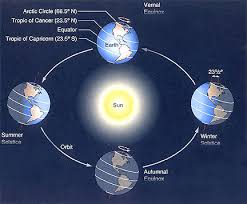Winter is approaching!
TDT | Manama
The Daily Tribune – www.newsofbahrain.com
Winter is coming. No, it isn’t that oft-repeated phrase in the fantasy drama series Game of Thrones. In the series, the meaning of those words is one of warning and constant vigilance.
However, here in Bahrain, it heralds the first day of winter, which is the astronomical first day of winter in the Northern Hemisphere, also the shortest day of the year. Bahrainis will witness this on December 21 at 01:02 pm which is marked by the winter solstice, Astronomer and researcher Muhammad Reda Al Asfour say.
The Astronomical winter begins at the winter solstice and ends at the spring equinox. Astronomical seasons are related to the position of Earth with the Sun. The winter solstice is thus the day with the fewest hours of sunlight in the whole year.
However, after this point, the day begins to grow longer until we reach the summer solstice— the first day of summer and the longest day of the year.
Explaining, Al Asfour said the winter solstice occurs once a year in each hemisphere: once in the Northern Hemisphere (in December) and Southern Hemisphere (in June). Which means, when one hemisphere is experiencing their winter solstice, the other is simultaneously experiencing their summer solstice! Winter, the shortest season of the year, lasts for 88 days, 2 3 hours and 35 minutes. On the first day of winter, Bahrain will see a rising sun at 06:20 am from the southernmost point of the east.
Sunset will be at 04:50 pm at the far south-west spot. Midday will be at 11:35 am. Winter in the northern hemisphere is also characterised by low temperatures, as the rays of the Sun are inclined to the Tropic of Cancer creating longest nights and shortest days. However, this begins to change gradually.
The night hours will gradually decrease, “heralding the entry of summer in the Southern Hemisphere, where temperatures gradually rise.” Al Asfour explains: “This is due to the perpendicularity of the Sun to the Tropic of Capricorn where it produces longest days and shorter nights.
Days will gradually decrease in length. This is all thanks to Earth’s tilted axis, where one half points away from the Sun, and the other half points towards it at the time of the solstice.
What causes the seasons?
Many believe that Earth is close to the Sun in the summer and farther in winter. Although the idea makes sense, it is incorrect. As Al Asfour explains, “There are different reasons for the Earth’s season.” “We experience four seasons mainly because of a tilt in the Earth’s axis by 23.5 degrees during its rotation in an elliptical orbit. During this rotation, the tilted axis of the Earth always remains in the same direction. Meaning, throughout the year, different parts of Earth get direct rays from the Sun. Sometimes it is the North Pole tilting toward the Sun - in June - and sometimes it is the South Pole tilting toward the Sun - in December.
The great conjunction
Another spectacular astronomical phenomenon is also taking place on the same day - the great conjunction of Jupiter and Saturn. This is, of course, an end-of-the-year treat for skywatchers as the vibrant planetary conjunction is easily visible in the evening sky. But what makes the spectacle so rare? The planets have never come close to each other in the sky in nearly 400 years. NASA says that the phenomenon occurs after 800 years since the alignment of Saturn and Jupiter occurred at night. Al Asfour explains that the two planets on this day will approach Earth and will be 0.1 degrees apart. “They can be seen clearly with the naked eyes after Sunset on the western horizon of the sky in Bahrain as two bright spots until 07:06 pm.
Cultural significance
The solstice, in some cultures, traditionally marked the midday points of the season rather than the start of it, explaining why holidays such as Midsummer Day are celebrated. Historically, this day marks the midpoint of the growing season, halfway between planting and harvest. It is traditionally known as one of four “quarter days” in some cultures. The word solstice comes from the Latin sol “sun” and sistere “to stand still.” So, loosely translated, it means “sun stand still.” Scientists also believe that the Stonehenge in England corresponds with the use of the solstices and possibly other solar and lunar astronomical events.
Related Posts


